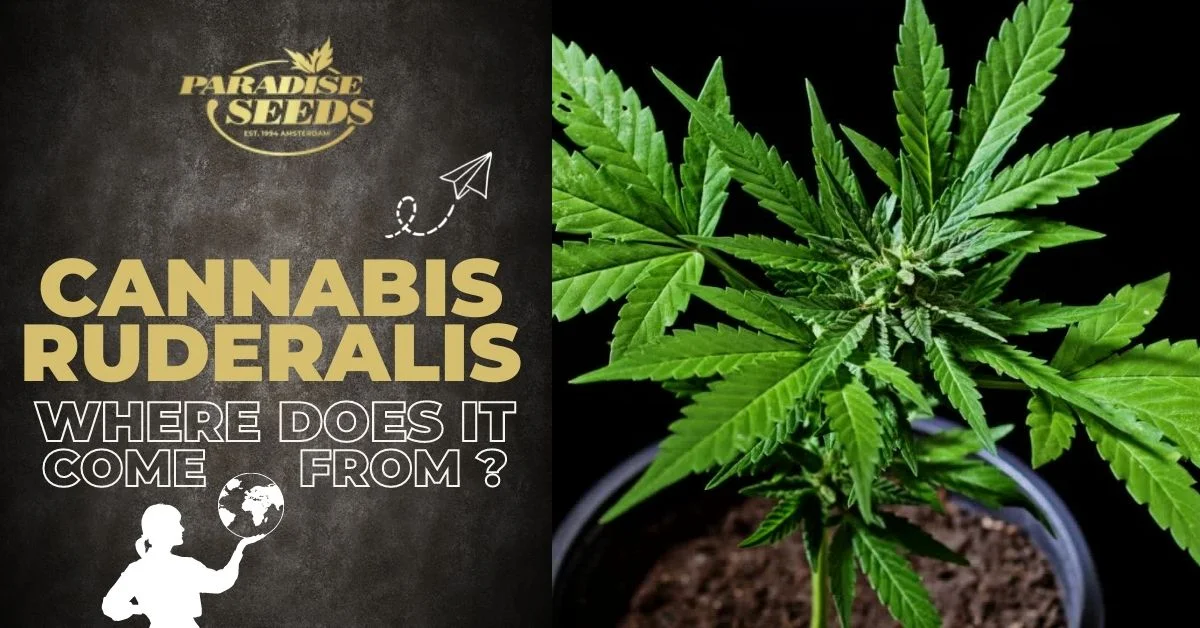Most people have an awareness of the existence of cannabis sativa and indica. For anyone growing from autoflower cannabis seeds, the term ruderalis will also be familiar as it will appear in the percentage stats in the description (ie indica 60%/Sativa 30%/Ruderalis 10%). Autos transformed the cannabis industry – plants that will flower without any change in the light, producing a quick and guaranteed harvest for the grower.
Most growers know that it is the ruderalis in their auto cannabis plant which are responsible for the quick growing times. However, because this stubby little cannabis plant has limited perceived value, in terms of taste and THC, it is often dismissed as just an ingredient in the autoflower mix. However, this remarkable plant which grows in inhospitable climates, from Central Europe and Asia up to the Arctic circle deserves far more credit.
Is Kazakhstan Home to the Ruderalis?
There is plenty of evidence to suggest that Kazakhstan, the largest landlocked country in the world, is the original home of Cannabis Ruderalis. The plant was given its name by a Russian botanist, who discovered the distinctive looking cannabis plants in southern Russian regions which border Kazakhstan.
Dimitrij Janiszewski was the first to observe the hardiness of the ruderalis. In the first instant, it was its incredible ability to survive in a region where the summer is short and hot and the winter is long. He also noted other impressive resistance qualities of the cannabis ruderalis plant, which rarely grow higher than 80cm in the wild. He saw the plant’s oily seeds were feasted on by little red insects known as red soldier or red firebugs (Pyrrhocoris apterus L.) which would carry them off where they would grow into new plants.
Legendary strain hunter Franco Loja, refers to ruderalis in the region as flowering in June when there are 18 hours of daylight, before its seeds fall on the ground and lie dormant under the winter snow until it melts the following Spring (in May). Its efficient reproductive resources mean ruderalis proliferates throughout this country, often appearing along roadsides and frequently referred to as ‘ditch weed’.
Kazakhstan Land Races
Possible home to the Ruderalis, Kazakhstan also has some remarkable land races which appear to defy the laws of climate and geography. Traces of cannabis culture in Kazakhstan are said to extend back to the era of the nomadic tribes known as the Scythians (7th century B.C), where buds and seeds were ritually burned and the vapor breathed as part of a ceremony to honor the dead.
Such intoxication, probably owed more to the land races which grow in the north east of the country in the Tien Shan (Black Mountains) range. The heartland of Kazakh cannabis is the Chui (Chuy) Valley, a fertile region the size of France which is where many of the land races can be found (if you are looking for an alternative stoner movies then check out Shu-Chu for a feel of the place and a sense of Kazahstan’s cannabis culture and heritage.
In modern times the tradition of the ruderalis thrives in the form of autoflowers. Paradise Seeds was one of the first cannabis seed companies to develop autoflower seeds and the auto range includes plants prized for good resistance qualities as well as excellent harvest potential, such as Vertigo, Auto Wappa and Auto Kong 4.


